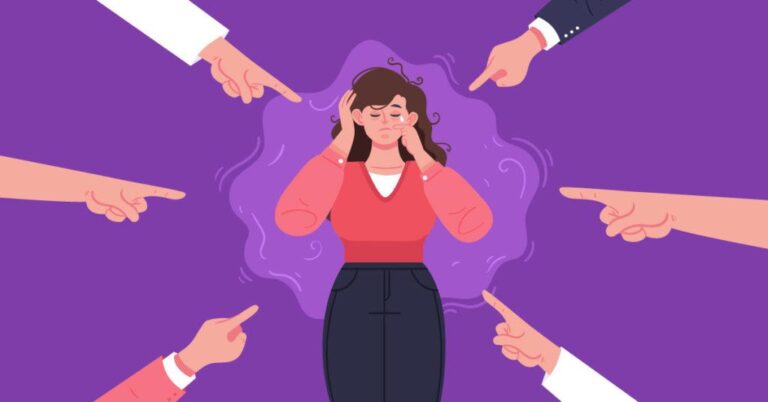The rate of mental health disorders among students is growing. Studies show over half of the learners in US public universities experience anxiety. The report on Suicide is by Prevention Resource Center. It shows 30% of students suffer from stress.
Science Direct says that mental health in schools is due to academic pressure. Students are under pressure to complete essays, study, and do exams. Most of the learners with mental health disorders experience stigma at various levels. It may come from the self or the student community around them. Those affected lose their sense of belonging.
The Impact of Mental Health Stigma on Student Communities: Understanding the Social Issue
Positive mental health provides learners with the ability to live a successful life. They can learn, feel, express, and manage their emotions. Many studies show a lot of learners suffer from mental health. It is due to various underlying issues.
- Academic pressure to complete assignments, attend lessons, and pass exams
- Social issues – being in a morally corrupt group of friends, bullying, and racism
- Financial pressure – lack of fees, living expenses, and pocket money
- Experiences of trauma in childhood – the death of a parent and rape
Stigma, whether from self or student community has a significant impact on victims. It happens when the affected person or peers views the disorder negatively. The student community may start to define or address them based on their disorder. This makes the victims believe the condition is what defines them and nothing less.
Awareness can help address mental health issues properly. Student communities need to be educated through different initiatives. It can involve workshops, campaigns, and informative resources. They can also include writing essays or research papers about social issues.
They act as critical tools for spreading accurate information about mental health. Incorporating informative essay about social issues can help learners significantly. The free essay samples on social issues help them understand the stigma. By reading the examples, they get empowered to challenge the stereotypes. They overcome the misconceptions and gear towards offering support to the victims.
The negative impact includes the following:
- Withdrawal from social circles and refusal to seek help
- The victim feels hopeless, shameful, and isolated
- They may experience harassment, bullying, and sometimes physical violence
- They might start to doubt themselves and their capabilities
Breaking the Silence: Initiating Conversations and Raising Awareness about Mental Health
Breaking the silence is one of the approaches that bring change. Starting conversations around the issue will bring a positive impact. It will end the belief that the affected learners can never succeed.
It will end discrimination and harassment against the victims. It will also end the poor understanding by student communities about the issue. There are different ways to break the silence and start conversations.
- Start conversations openly. Teachers should offer guidance and openly talk about the issue among students.
- Educate learners to create awareness. Teach in schools about disorders, causes, and management.
- Dispel the stereotyping and misconceptions.
- Help affected students share their personal stories. Speaking out is part of healing and can encourage another victim.
- Do advocacy and collaborate. Launch awareness campaigns on campuses to advocate against the stigma. Join mental health organizations for better outcomes.
Challenging Stereotypes and Misconceptions: Promoting Acceptance and Understanding
There is a belief among student communities. They think that learners with mental disorders are poor performers. Some believe they are a danger to the community and themselves. They believe they can harm people, be attacked, or harm themselves. There is a misconception that affected learners are crazy, violent, and cannot be treated. Teachers can help promote acceptance and understanding of the issue.
Teachers need to create forums to encourage affected learners to share their experiences. They need to teach the truth about the misconceptions and eliminate the myths. They need to help the other students to learn to listen and understand the issue.
They need to reach out to them and socialize with them. Suggest to the student community ways to welcome the affected. They should help them feel safe and comfortable at school.
Building Supportive Communities: Creating Safe Spaces and Providing Resources for Students
Safe spaces can help break away judgments, negative opinions, and stereotyping. Safe spaces can include the classroom. There, students engage in intellectual talks about what they feel uncomfortable about.
Safe spaces can also be student groups on campuses. The groups should seek to give affected learners emotional security and respect. Humans are social beings and perform well in positive relationships.
A supportive community promotes resilience and eliminates stigma. They foster a sense of belonging which helps hasten the healing process. Safe spaces allow honest dialogue support.
Learners talk openly about their feelings, thoughts, and challenges. They share their stories and encourage support for each other. It also creates room for launching education and awareness programs.
Conclusion
Mental health stigma is a major challenge affecting learning on campuses. Student communities have different misconceptions about the issue. The school can create ground to eliminate stereotyping. They need to educate the learner community to expel the myths and create truths. They should encourage learners to offer support to their affected peers.














